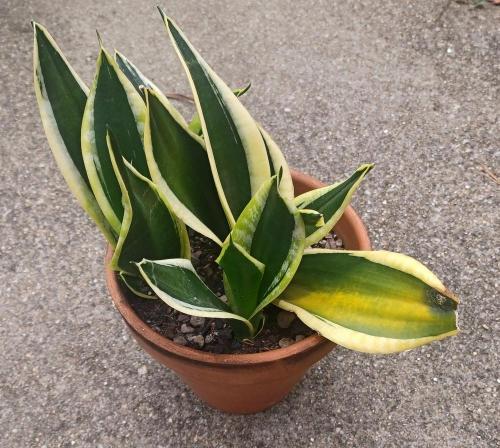
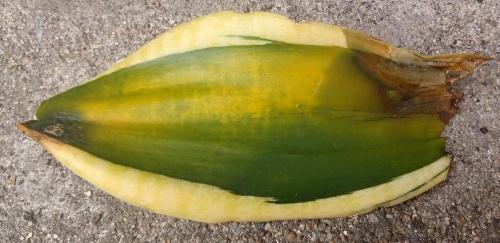
Humboldt said: Those could be the oldest leaves having given their energy away a while ago.
Where do you live?
The combination of low watering plus the the clay pot could take a toll given anywhere.
Humboldt said: Looking at the pictures again and same thoughts.
New growth looks great!
I think the older leaves may have used their energy up supporting the new roots and leaves and are just making room.
I cut them off when they are getting close to using more resources than they contribute.
tapla said: @1337n3ss Most growers assume that because sphagnum peat and coir look similar, that coir and peat should be interchangeable, but such is not the case. Coir and peat are different both physically and chemically to the degree where growers should have work-arounds in place to deal with the differences. Coir is mildly to strongly allelopathic to a high of plants. Allelopathic plants release biocompounds toxic to other plants as a method of reducing competition for resources. Coir is very low in calcium, making it essential to ensure the plant gets an adequate supply of calcium from an extraneous source and an appropriate amount of magnesium (magnesium is a calcium antagonist). Coir, though very low in Ca, has a pH low enough to preclude use of calciferous liming agents as a source of Ca/Mg. It is extremely high in potassium such that fertilizers with normal amounts of potassium (roughly 60-65% of the amount of nitrogen in a fertilizer product) can create a potassium toxicity. It has much less loft than sphagnum peat, so it compacts easily whenever watered from the top, which increases water retention at the expense of aeration, less than ideal for plants like sans that do best when treated like a succulent.
in all other cases all rotting leaves were young (unfortunately, I did not take any pictures before cutting them off). What could be the reason behind that? If you're not fertilizing and/or the fertilizer you're using doesn't contain calcium, coir's low Ca content is likely to blame. Ca must be in the nutrient stream in adequate amounts as new cells form. A deficiency of calcium causes cell walls to form imperfectly and/or weakly, subsequently causing rupture of cells or areas where cell contents spill out into inter-cellular spaces, leaving rotten areas which act as openings through which fungal or bacterial pathogens can attack the plant.
Low fertility, especially deficiencies of the mobile nutrients (nitrogen, phosphorous, potassium, magnesium) can force the plant to rob nutrients from older leaves during a period of resorption, the first step in the shedding process, but I suspect (given what info you have provided and the images) that this isn't what's causing the conspicuous symptoms.
Do you fertilize? with what? when last?
How do you tell when it's time to water?
The pot has a drain hole?
When you water, do you water copiously, so at least 20% of the water used to wet the entire soil column exits the drain hole?
Does your home make use of a water softening system - the type that uses salt as the exchange medium (ionic exchange water softener)?
Al
1337n3ss said:
I have seen multiple people completely neglect their snake plants - not watering them for months, keeping them in the darkest corners in their houses - and the plants did not seem to mind that one bit.

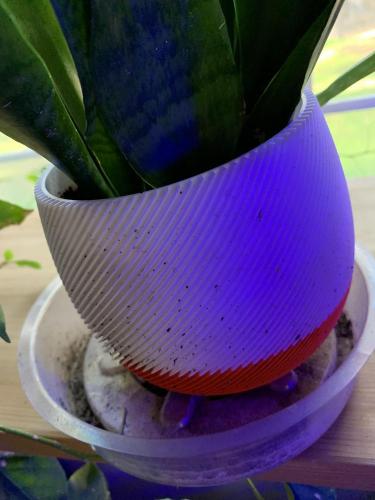
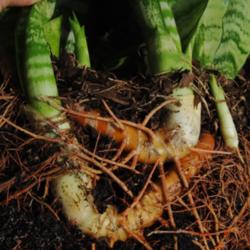
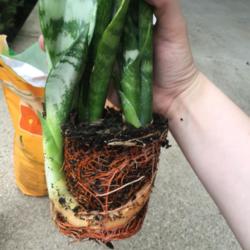
Humboldt said: When in doubt try a new route:)
You could always try their method for a bit.
kittriana said: enh, its winter time, slow growth, I have a snake plant I neglect - it is in a 3D? formed pot. It doesn't like drafty places or being messed with, it generally gets house temps which are 58* to 68* right now. It decided to grow this summer after sitting happily at one size for a year, so got brought home from the office.
Why does everyone think 20-20-20 is a good fertilizer strength? We only use those high numbers because we get so much rain the ground needs help. If I want something to grow high, I use a high N ( say a 6) don't need it to bloom, so a very low P ( say a 3) and K, again low ( I believe 1 mg of potassium equals 1 TBSP of salt) An NPK fertilizer if used too often and too heavily turns a plants cells woody which means they can't uptake anything. I have seen snake plants 6' tall in a 1 gallon pot happy as they can be (though in warmer weather than my home temps). It gets about 1 Tbsp rainwater a month and nothing but the Happy Frog potting soil I added around the original plug

sallyg said: If it was my plant, I would have to pull it from the pot and really see what the roots are doing.
purpleinopp said: I predict they're squished, knotted, probably under a lot of pressure from inability to expand. There could be foliage under there that is unable to squeeze through to the surface.
- Snake Plant (Dracaena trifasciata)
- Uploaded by purpleinopp
- Snake Plant (Dracaena trifasciata)
- Uploaded by ljones26
When unimpeded by the limits of a pot, the rhizome creeps indefinitely just under the surface, with some space between rosettes.
But as far as one older rosette shriveling away, that's normal, as they age and new ones take their place.
kittriana said: @1337n3ss It is the NUMBER that is important, not the dilute
kittriana said:sometimes there are deer included as that is a trail they use, means losing plants I don't expect them to nibble occasionally.